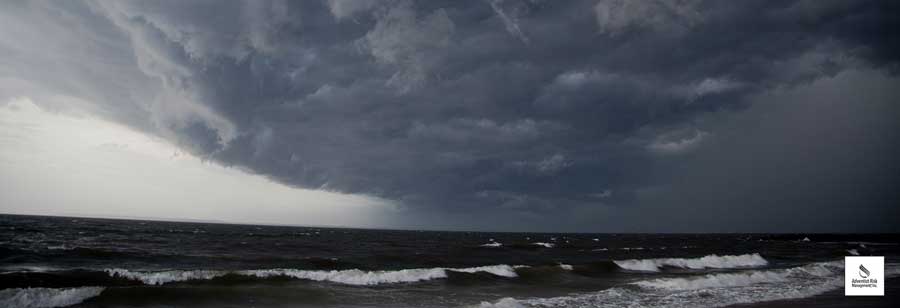In 2005, I experienced my first hurricane during Hurricane Wilma. I had never seen such a downpour of water nor such high winds that overpowered the rain in volume. All sorts of debris, fallen trees and branches, and random household items that’d been lifted up in the wind cluttered the streets. After the hurricane had passed, my family and I waited with six million others for power to be restored. We even waited over 12 hours to fill up the gas tank of one car in a line that stretched and curved through a shopping plaza.
When it comes to rain and storms, we often might not take the severity of the situation very seriously. It’s easy to think that four walls or a moving vehicle are protection enough from the storm. But the truth is if we don’t take severe storms seriously, it could very quickly result in a fatal situation. Here are a few good rules of thumb to follow before severe storms arrive to help minimize risk for your ministry.
Connect with local weather alerts
Is a storm forecasted to touch down on the same night as the midweek prayer service? Will your special Sabbath program be affected by extreme weather? Evaluate weather alerts and advisories as you receive them to determine whether it is necessary to delay or cancel church services or programs. A few ways* to determine whether or not a cancellation is necessary include:- Local officials declare a state of emergency or evacuation
- No running water, heat, lights
- An extended power outage
Reinforce your facilities
Severe weather and storms usually come with powerful winds and flying debris. Average wind speeds during hurricanes can range anywhere between 75-157 miles per hour or higher. Protect your facilities by reinforcing the windows, doors, and roofing.Consider investing in steel or aluminum panels to cover the windows. Securely fasten the panels to the windows before the storm hits. You can use plywood to board up doors and keep them sturdily in place. Ready.gov recommends using a water sealer in all areas that have basements. Other prevention methods include sandbagging, elevating utilities, and moving furniture to the second floor. Additionally, secure outdoor items that could be blown away and cause damage. Trim or remove damaged trees and limbs, and secure loose rain gutters and downspouts.
Provide shelter and aid to those affected
If it is confirmed that your facilities will not be affected by the storm, consider providing housing and assistance to those who might be affected. First, evaluate whether or not your facility has the capability to act as a shelter. Gather a group of volunteers and collect items storm victims might need such as water, food, cots, blankets, and device-charging stations if your facility has power.If you decide to provide on-location emergency aid instead, make sure each of your volunteers has the proper training, orientation, and gear necessary for aiding storm victims. Make sure volunteers register with local disaster response organizations before disaster strikes.
Learn more about preparing for severe storms in Adventist Risk Management’s Severe Storm Preparation and Safety Guide.


